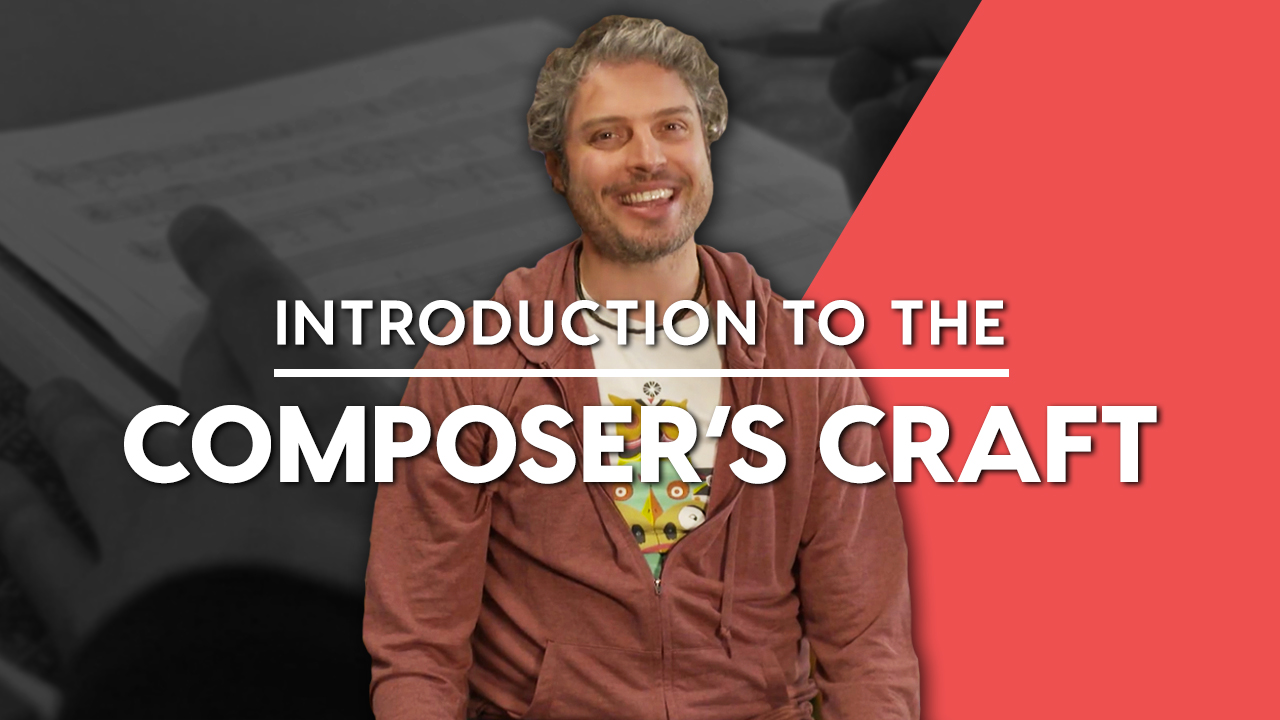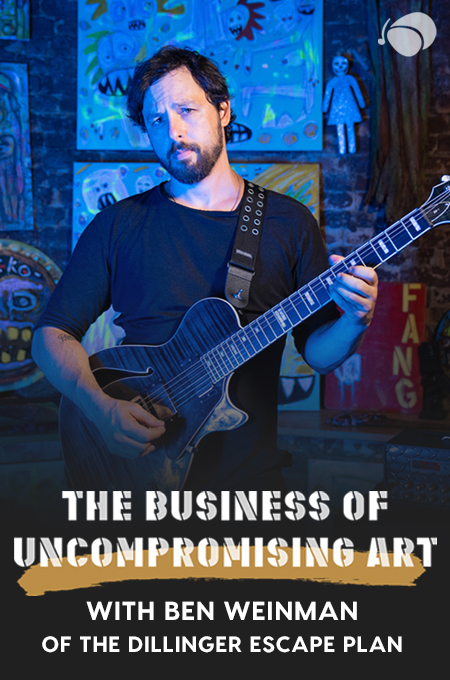+ Soundfly’s Intro to Scoring for Film & TV is a full-throttle plunge into the compositional practices and techniques used throughout the industry, and your guide for breaking into it. Preview for free today!
György Sándor Ligeti (1923-2006) was a Hungarian composer, active roughly from the 1950s until the end of his life. He has written music in many different forms and for many different ensembles, spanning from works for solo piano to orchestral pieces, chamber pieces, electronics and opera.
Some of his music was featured in Stanley Kubrick’s films 2001: A Space Odyssey, The Shining and Eyes Wide Shut. Specifically, his pieces “Atmospheres,” “Lux Aeterna,” “Requiem,” “Lontano” and the second movement from “Musica Ricercata” all appear in Kubrick’s cinema masterworks.
Today I want to look at his first movement from “Musica Ricercata,” a piece for solo piano which features a very unusual choice: The use of one single note for the vast majority of the composition. Listen below.
And Ligeti is no stranger to peculiar choices.
In 1962, he composed “Poème Symphonique For 100 Metronomes,” in which metronomes tick at different rates and stop in different moments of the piece, creating a cloud of rhythms that dispels as the metronomes stop respectively.
“Musica Ricercata” is a work consisting of 11 movements for solo piano, which make use of two notes in the first movement, three in the second, four in the third and so on, featuring the full chromatic scale in the last movement of the work. We will look at the first movement for its unusual and brave choice of using a single note for an entire composition (or as we’ll see, for all but the last four measures).
In the words of Ligeti himself, this came about as a challenge to overcome certain set limitations:
“I set myself such problems as: What can I do with a single note? with its octave? with an interval? with two intervals?” He also added that “certain features of these problems and their solutions have something in common with the principles of serial composition.”
They sure do! Serial composition means composing using notes in a certain set order, hence limiting the available choice of notes.
We must realize that Ligeti was working in the Hungary, in (almost) total isolation from the rest of the continent, where Schoenberg, Berg, Webern, and later Boulez and Stockhausen were using serial techniques to find a way to detach modern music from the “tyranny” of the Western tonal system. Ligeti approached the same problem from an apparently antithetical standpoint (using one note instead of a fixed series of twelve pitches), yet focusing on the other parameters of music in order to create direction and growth.
Here is a list of the main parameters in music composition:
- Harmony
- Melody
- Rhythm
- Tempo
- Dynamics
- Timbre
- Texture
In this piece, harmony and melody are very limited. Harmony is non-existent (if considered as the use of at least three different pitches at the same time) and melody is reduced to one single note, with the only possible combinations resulting in unisons and octaves.
The resources in timbre are also quite limited, as the piece is composed for a single instrument. The piano is a great instrument with regards to dynamic range, but not quite as versatile in terms of timbre. The problem that springs from these limitations, especially the first, is how to fulfil the needs of a musical composition to provide enough variety so that the music would engage the listener, have forward momentum, and contain a sense of tension and resolution, which is fundamental for musical syntax.
Let’s see how Ligeti uses the other parameters on that list to achieve this. Here’s a video of just the first movement of “Musica Ricercata:”
The piece is constructed as a linear entity, with an introduction and conclusion that share the use of natural harmonics in the piano. The keys two octaves below the notes in Bar 3 are pressed but only sound out by sympathetic resonance, after the sforzatissimo in the upper part (0:13 into the video). Ligeti uses sub-harmonics in the first part and both lower and upper harmonics at the end of the piece.
The piece follows this brief introduction with a tempo change from Sostenuto (66 BPM) to Misurato (106 bpm). The tempo will change again to Prestissimo later on in the piece, helping to create a sense of momentum with an increasingly faster beat.
Note how Ligeti starts from a very low register, at a very quiet dynamic (pianissimo) and with staccato articulation (0:24). The pedal in the left hand forms gradually from a fragmented rhythm until it unfolds in a continuous stream of staccato eighth notes (0:42). Superimposed on this low A pedal is a rhythmic motif in the right hand (0:46). Ligeti shows here great mastery in rhythmic variation. This rhythmic fragment is created by accumulation and extension of a first cell which is elongated and then further fragmented in this fashion.

From its first appearance as: (a.) the rhythmic motif is repeated (thus stated as an important element in the composition), then shifted on upbeats (0:57). From this fragment, a new development is presented (b.), the rests in (a.) are filled with notes. Subsequently, this fragment is transformed into (c.), showing the first instance of fragmentation. The first quarter note has now become an eighth note, the rhythm is chopped and tossed around the bar, to create a sense of urgency and disorientation in a way that is reminiscent of Stravinsky’s “Danse Des Adolescentes” in The Rite Of Spring.
A further fragmentation of the material brings us to (d.). This rhythmic cell is then chopped into (d1.) and (d2.), which reinforces the sense of urgency. All this material is also subject to octave displacement and expansion of registers (0:59 onwards): From a low A3, the fragments are interspersed with notes in the upper octaves (A4, A5). The note A6 is presented as an interval of an octave (A5 and A6) with a leap in register (1:31).
All this is corroborated by an intensification of dynamics, which grow gradually into fortissimo (1:05 onwards). A first climax is reached in the Prestissimo section: (d.) is now played by both hands and the staccato articulations are now accented, longer (and therefore heavier) notes (1:58).

The music becomes frantic and highly directional. It is pointing towards a piu’ che sforzatissimo (sfff) octave double-stop in the low register, followed by the apparition of silence, which contributes to hold back the accumulated energy for a moment (2:03). It is this moment of silence which creates a striking contrast with what follows: A powerful “quadruple-stop” (marked with “tutta la forza” — or, “with utmost strength” — and “ferocissimo” — “very ferocious”) in which five octaves divide the notes in the left and right hands (2:09).
The piece ends with the same texture we heard at the beginning, natural harmonics produced by sympathetic resonance (2:23). Only a tiny variation in the musical landscape pops up — a new note, D. Although this looks like an anomaly in the construction of the piece, in my opinion this choice makes total sense, considering that this work is a series of 11 pieces, the presence of another note creates a sense of directionality. Instead of the movements feeling like isolated fragments collected together, inserting a new note before this section ends offers a glimpse ahead, and a bit of connective tissue.
I think “Musica Ricercata” represents a little compendium in advanced composition. The absence, or the reduction to a minimum, of three of the main and most recognizable parameters in music (harmony, melody, timbre) clearly shows how it is possible to use the other parameters (dynamics, tempo, register, articulation, and rhythm) to create a sense of directionality, growth, and change to the music.
The following table summarizes how Ligeti varies these parameters to achieve the sense of directionality throughout the piece (from left to right).

Have you checked out Soundfly’s courses yet?
Continue your learning with hundreds of lessons by boundary-pushing, independent artists like Kimbra, Ryan Lott & Ian Chang (of Son Lux), Jlin, Elijah Fox, Kiefer, Com Truise, The Pocket Queen, and RJD2. And don’t forget to try out our intro course on Scoring for Film & TV.




